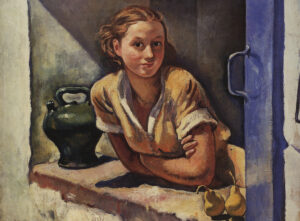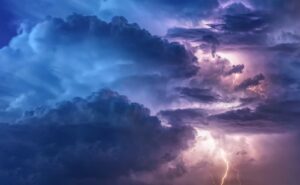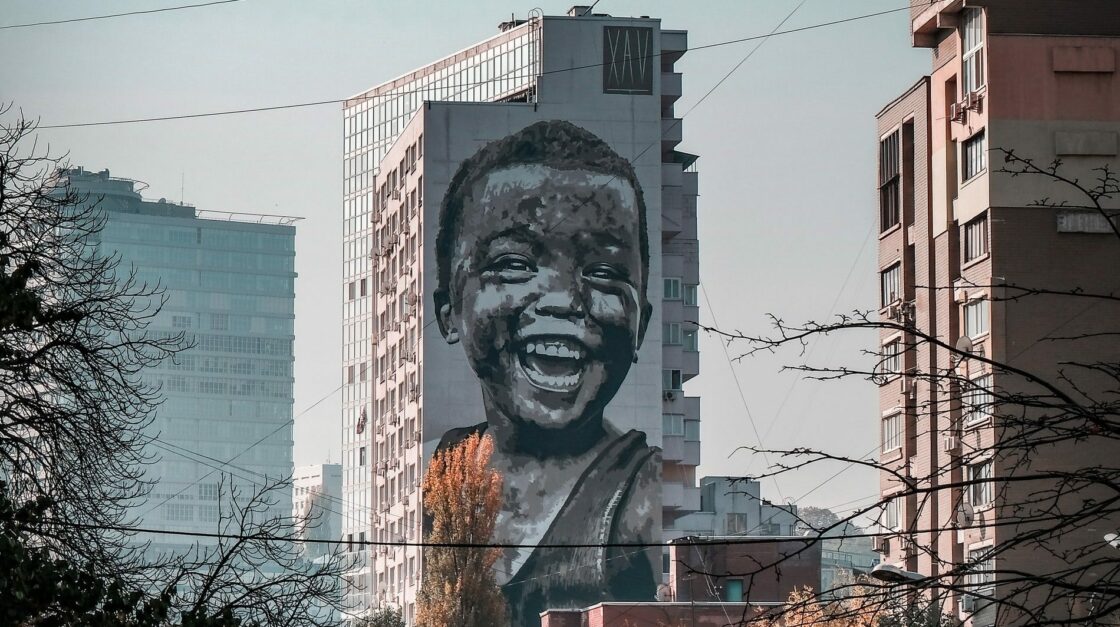What is creative nonfiction? Despite its slightly enigmatic name, no literary genre has grown quite as quickly as creative nonfiction in recent decades. Literary nonfiction is now well-established as a powerful means of storytelling, and bookstores now reserve large amounts of space for nonfiction, when it often used to occupy a single bookshelf.
Like any literary genre, creative nonfiction has a long history; also like other genres, defining contemporary CNF for the modern writer can be nuanced. If you’re interested in writing true-to-life stories but you’re not sure where to begin, let’s start by dissecting the creative nonfiction genre and what it means to write a modern literary essay.
Creative Nonfiction Contents
What Creative Nonfiction Is
Creative nonfiction employs the creative writing techniques of literature, such as poetry and fiction, to retell a true story.
How do we define creative nonfiction? What makes it “creative,” as opposed to just “factual writing”? These are great questions to ask when entering the genre, and they require answers which could become literary essays themselves.
In short, creative nonfiction (CNF) is a form of storytelling that employs the creative writing techniques of literature, such as poetry and fiction, to retell a true story. Creative nonfiction writers don’t just share pithy anecdotes, they use craft and technique to situate the reader into their own personal lives. Fictional elements, such as character development and narrative arcs, are employed to create a cohesive story, but so are poetic elements like conceit and juxtaposition.
The CNF genre is wildly experimental, and contemporary nonfiction writers are pushing the bounds of literature by finding new ways to tell their stories. While a CNF writer might retell a personal narrative, they might also focus their gaze on history, politics, or they might use creative writing elements to write an expository essay. There are very few limits to what creative nonfiction can be, which is what makes defining the genre so difficult—but writing it so exciting.
Article continues below…
Creative Nonfiction Writing Courses We Think You'll Love
We've hand-picked these courses to help you flourish as a writer.

Long Story Short: Compressing Life into Meaningful Micro Memoirs
Distill the spirit of your story in fewer than 500 words. Learn to craft compelling short nonfiction, and write and...
Find Out More
Creative Nonfiction: The Art of Telling True Stories
How do you tell your stories beautifully and authentically? Learn the fundamentals of creative nonfiction with Nicole Hardy.
Find Out More
Six Flash Essays in Six Weeks
Tell the stories of your life in 1,000 words or less in this generative flash essay workshop.
Find Out MoreOr click below to view all courses.
See CoursesArticle continues…
Different Forms of Creative Nonfiction
From the autobiographies of Mark Twain and Benvenuto Cellini, to the more experimental styles of modern writers like Karl Ove Knausgård, creative nonfiction has a long history and takes a wide variety of forms. Common iterations of the creative nonfiction genre include the following:
Memoir
The memoir form is probably the most recognizable form of creative nonfiction. Memoirs are collections of memories, either surrounding a single narrative thread or multiple interrelated ideas. The memoir is usually published as a book or extended piece of fiction, and many memoirs take years to write and perfect. Memoirs often take on a similar writing style as the personal essay does, though it must be personable and interesting enough to encourage the reader through the entire book.
Memoirs are not the only book-length works of creative nonfiction: autobiographies and biographies are also ways of exploring real life on the page. Learn more about their differences here:
Memoir Vs Autobiography Vs Biography: The Craft of Nonfiction Books
Personal Essay
Personal essays are stories about personal experiences told using literary techniques.
When someone hears the word “essay,” they instinctively think about those five paragraph book essays everyone wrote in high school. In creative nonfiction, the personal essay is much more vibrant and dynamic. Personal essays are stories about personal experiences, and while some personal essays can be standalone stories about a single event, many essays braid true stories with extended metaphors and other narratives.
Personal essays are often intimate, emotionally charged spaces. Consider the opening two paragraphs from Beth Ann Fennelly’s personal essay “I Survived the Blizzard of ’79.”
We didn’t question. Or complain. It wouldn’t have occurred to us, and it wouldn’t have helped. I was eight. Julie was ten.
We didn’t know yet that this blizzard would earn itself a moniker that would be silk-screened on T-shirts. We would own such a shirt, which extended its tenure in our house as a rag for polishing silver.
The word “essay” comes from the French “essayer,” which means “to try” or “attempt.” The personal essay is more than just an autobiographical narrative—it’s an attempt to tell your own history with literary techniques.
Lyric Essay
The lyric essay contains similar subject matter as the personal essay, but is much more experimental in form.
The lyric essay contains similar subject matter as the personal essay, with one key distinction: lyric essays are much more experimental in form. Poetry and creative nonfiction merge in the lyric essay, challenging the conventional prose format of paragraphs and linear sentences.
The lyric essay stands out for its unique writing style and sentence structure. Consider these lines from “Life Code” by J. A. Knight:
The dream goes like this: blue room of water. God light from above. Child’s fist, foot, curve, face, the arc of an eye, the symmetry of circles… and then an opening of this body—which surprised her—a movement so clean and assured and then the push towards the light like a frog or a fish.
What we get is language driven by emotion, choosing an internal logic rather than a universally accepted one.
Lyric essays are amazing spaces to break barriers in language. For example, the lyricist might write a few paragraphs about their story, then examine a key emotion in the form of a villanelle or a ghazal. They might decide to write their entire essay in a string of couplets or a series of sonnets, then interrupt those stanzas with moments of insight or analysis. In the lyric essay, language dictates form. The successful lyricist lets the words arrange themselves in whatever format best tells the story, allowing for experimental new forms of storytelling.
Literary Journalism
Much more ambiguously defined is the idea of literary journalism. The idea is simple: report on real life events using literary conventions and styles. But how do you do this effectively, in a way that the audience pays attention and takes the story seriously?
You can best find examples of literary journalism in more “prestigious” news journals, such as The New Yorker, The Atlantic, Salon, and occasionally The New York Times. Think pieces about real world events, as well as expository journalism, might use braiding and extended metaphors to make readers feel more connected to the story. Other forms of nonfiction, such as the academic essay or more technical writing, might also fall under literary journalism, provided those pieces still use the elements of creative nonfiction.
Consider this recently published article from The Atlantic: The Uncanny Tale of Shimmel Zohar by Lawrence Weschler. It employs a style that’s breezy yet personable—including its opening line.
So I first heard about Shimmel Zohar from Gravity Goldberg—yeah, I know, but she insists it’s her real name (explaining that her father was a physicist)—who is the director of public programs and visitor experience at the Contemporary Jewish Museum, in San Francisco.
How to Write Creative Nonfiction: Common Elements and Techniques
What separates a general news update from a well-written piece of literary journalism? What’s the difference between essay writing in high school and the personal essay? When nonfiction writers put out creative work, they are most successful when they utilize the following elements.
Narration
Just like fiction, nonfiction relies on effective narration. Telling the story with an effective plot, writing from a certain point of view, and using the narrative to flesh out the story’s big idea are all key craft elements. How you structure your story can have a huge impact on how the reader perceives the work, as well as the insights you draw from the story itself.
Consider the first lines of the story “To the Miami University Payroll Lady” by Frenci Nguyen:
You might not remember me, but I’m the dark-haired, Texas-born, Asian-American graduate student who visited the Payroll Office the other day to complete direct deposit and tax forms.
Because the story is written in second person, with the reader experiencing the story as the payroll lady, the story’s narration feels much more personal and important, forcing the reader to evaluate their own personal biases and beliefs.
Observation
Telling the story involves more than just simple plot elements, it also involves situating the reader in the key details. Setting the scene requires attention to all five senses, and interpersonal dialogue is much more effective when the narrator observes changes in vocal pitch, certain facial expressions, and movements in body language. Essentially, let the reader experience the tiny details – we access each other best through minutiae.
The story “In Transit” by Erica Plouffe Lazure is a perfect example of storytelling through observation. Every detail of this flash piece is carefully noted to tell a story without direct action, using observations about group behavior to find hope in a crisis. We get observation when the narrator notes the following:
Here at the St. Thomas airport in mid-March, we feel the urgency of the transition, the awareness of how we position our bodies, where we place our luggage, how we consider for the first time the numbers of people whose belongings are placed on the same steel table, the same conveyor belt, the same glowing radioactive scan, whose IDs are touched by the same gloved hand[.]
What’s especially powerful about this story is that it is written in a single sentence, allowing the reader to be just as overwhelmed by observation and context as the narrator is.
Braiding
We’ve used this word a lot, but what is braiding? Braiding is a technique most often used in creative nonfiction where the writer intertwines multiple narratives, or “threads.” Not all essays use braiding, but the longer a story is, the more it benefits the writer to intertwine their story with an extended metaphor or another idea to draw insight from.
“The Crush” by Zsofia McMullin demonstrates braiding wonderfully. Some paragraphs are written in first person, while others are written in second person.
The following example from “The Crush” demonstrates braiding:
Your hair is still wet when you slip into the booth across from me and throw your wallet and glasses and phone on the table, and I marvel at how everything about you is streamlined, compact, organized. I am always overflowing — flesh and wants and a purse stuffed with snacks and toy soldiers and tissues.
The author threads these narratives together by having both people interact in a diner, yet the reader still perceives a distance between the two threads because of the separation of “I” and “you” pronouns. When these threads meet, briefly, we know they will never meet again.
Insight
Speaking of insight, creative nonfiction writers must draw novel conclusions from the stories they write. When the narrator pauses in the story to delve into their emotions, explain complex ideas, or draw strength and meaning from tough situations, they’re finding insight in the essay.
Often, creative writers experience insight as they write it, drawing conclusions they hadn’t yet considered as they tell their story, which makes creative nonfiction much more genuine and raw.
The story “Me Llamo Theresa” by Theresa Okokun does a fantastic job of finding insight. The story is about the history of our own names and the generations that stand before them, and as the writer explores her disconnect with her own name, she recognizes a similar disconnect in her mother, as well as the need to connect with her name because of her father.
The narrator offers insight when she remarks:
I began to experience a particular type of identity crisis that so many immigrants and children of immigrants go through — where we are called one name at school or at work, but another name at home, and in our hearts.
How to Write Creative Nonfiction: the 5 R’s
CNF pioneer Lee Gutkind developed a very system called the “5 R’s” of creative nonfiction writing. Together, the 5 R’s form a general framework for any creative writing project. They are:
- Write about real life: Creative nonfiction tackles real people, events, and places—things that actually happened or are happening.
- Conduct extensive research: Learn as much as you can about your subject matter, to deepen and enrich your ability to relay the subject matter. (Are you writing about your tenth birthday? What were the newspaper headlines that day?)
- (W)rite a narrative: Use storytelling elements originally from fiction, such as Freytag’s Pyramid, to structure your CNF piece’s narrative as a story with literary impact rather than just a recounting.
- Include personal reflection: Share your unique voice and perspective on the narrative you are retelling.
- Learn by reading: The best way to learn to write creative nonfiction well is to read it being written well. Read as much CNF as you can, and observe closely how the author’s choices impact you as a reader.
You can read more about the 5 R’s in this helpful summary article.
How to Write Creative Nonfiction: Give it a Try!
Whatever form you choose, whatever story you tell, and whatever techniques you write with, the more important aspect of creative nonfiction is this: be honest. That may seem redundant, but often, writers mistakenly create narratives that aren’t true, or they use details and symbols that didn’t exist in the story. Trust us – real life is best read when it’s honest, and readers can tell when details in the story feel fabricated or inflated. Write with honesty, and the right words will follow!
Ready to start writing your creative nonfiction piece? If you need extra guidance or want to write alongside our community, take a look at the upcoming nonfiction classes at Writers.com. Now, go and write the next bestselling memoir!


Thank you so much for including these samples from Hippocampus Magazine essays/contributors; it was so wonderful to see these pieces reflected on from the craft perspective! – Donna from Hippocampus
Absolutely, Donna! I’m a longtime fan of Hippocampus and am always astounded by the writing you publish. We’re always happy to showcase stunning work 🙂
I like how it is written about him”…When he’s not writing, which is often, he thinks he should be writing.”
I’m so happy and feeling blessed to engage in this wonderful creative association of real creative people bringing out the gift of our sound mind.. Thank you so much everyone stay blessed
[…] Source: https://www.masterclass.com/articles/a-complete-guide-to-writing-creative-nonfiction#5-creative-nonfiction-writing-promptshttps://writers.com/what-is-creative-nonfiction […]
So impressive
Thank you.
I’ve been researching a number of figures from the 1800’s and have come across a large number of ‘biographies’ of figures. These include quoted conversations which I knew to be figments of the author and yet some works are lauded as ‘histories’.
excellent guidelines
inspiring me to write CNF
thank you
[…] writing a “Spring” scene today. I’ve mentioned before that my memoir is a work of creative non-fiction. Since much of the story takes place 2-5 decades ago, I don’t remember a lot of the […]
[…] “Creative Nonfiction: What it is and how to write it” writers.com […]
Very helpful handies